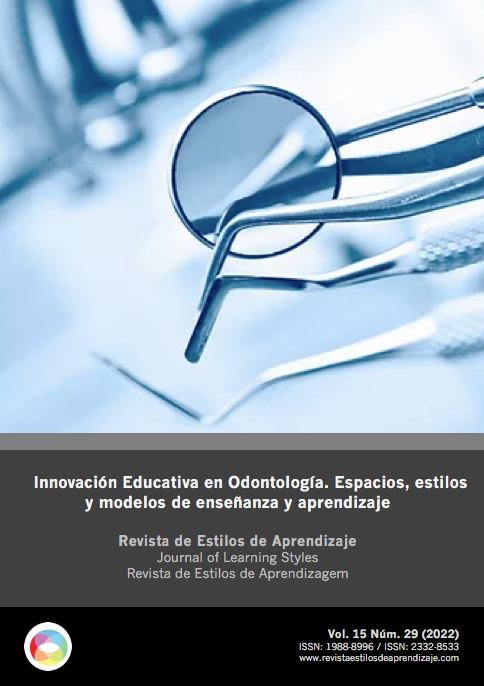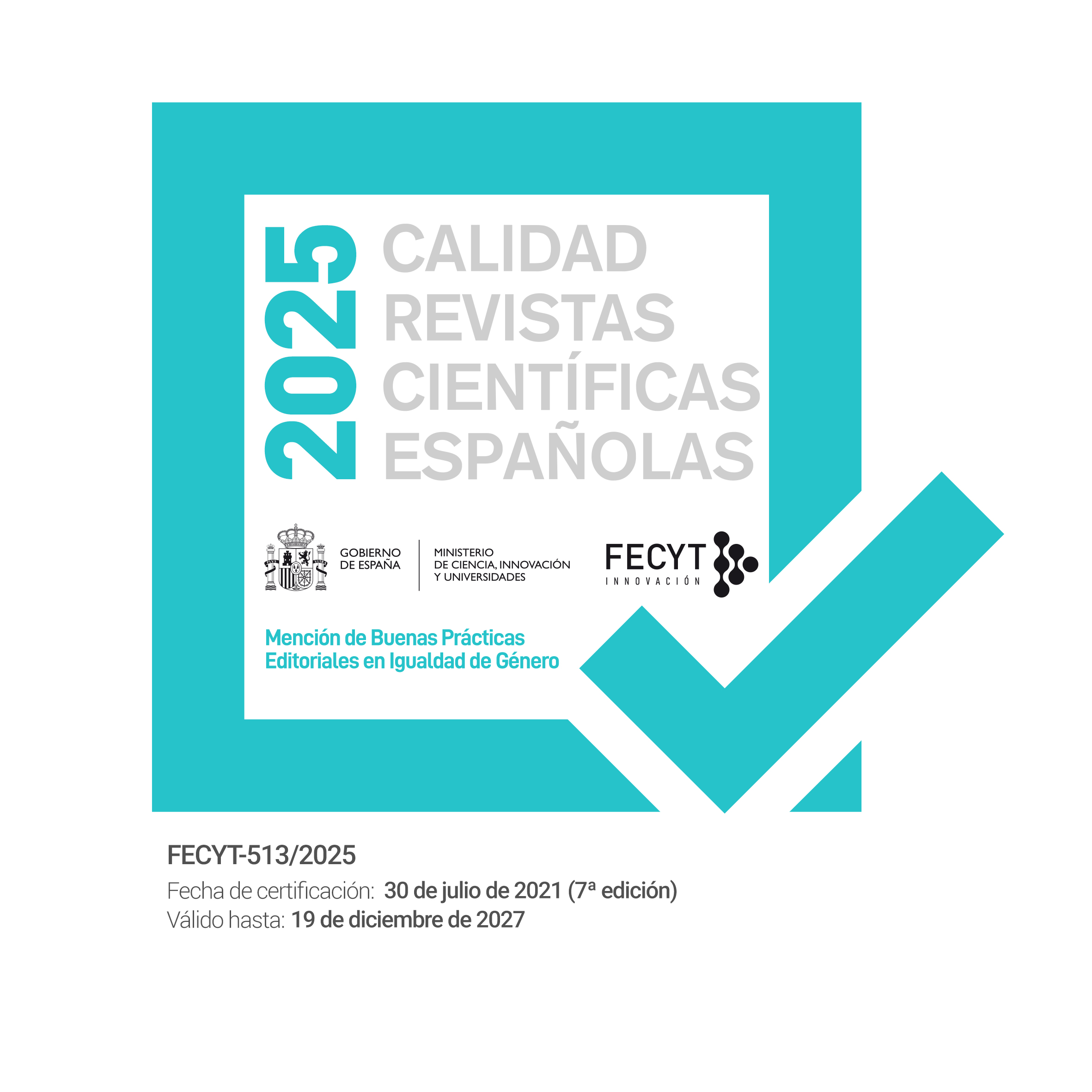“Signing to Childhood”: an inclusive methodology to early childhood education.
DOI:
https://doi.org/10.55777/rea.v15i29.4023Keywords:
Inclusive education, Bilingualism, Signs, Childhood, Methodology, ClassroomAbstract
The present study shows the validation of the bilingual methodology -signed and spoken language- proposed in the training program “Signándole a la infancia” (Signing to Childhood), by evaluating its implementation in regular early childhood classrooms, with the objective of making them inclusive. Two preschool classrooms were assessed over the course of seven months: a total of 28 participants with ages ranging from 20 to 36 months old. The evaluation was founded on three central factors: the teaching team, the children and their families. The evaluation tools were created ad hoc, through a rubric, a questionnaire for families and two evaluation sheets (initial and final), so they could adapt to the methodology and its implementation and development. The results showed that the use of signs in the classroom facilitates children’s communication and interactions, which promotes conflict resolution and brings about new learnings fostered by the bilingual environment. They also show an extrapolation of the use of signs outside the classroom, in the family setting and in non-educational contexts. These findings prove the efficiency of the proposed methodology and its potential to exponentially multiply inclusive realities.
Downloads
References
Acosta, V. M. (2005). La sordera desde la diversidad cultural y lingüística: construyendo centros inclusivos en la educación del alumno con sordera. Ed. Masson.
Ballesteros, X. y Villán, O. (2020). El pequeño conejo blanco. Kalandraka Editorial.
Barnes, S.K. (2010). Sign language with babies: What difference does it make? Dimensions of early childhood, 38 (1), 21-30. https://bit.ly/3e0QEl8
Benegas, M. y Cabol, M. (2015). Ñam-ñam. Combel Editorial.
Benegas, M. y Lalalimola. (2015). ¿Le pondremos un bigote? Combel Editorial.
Benegas, M. y Comín, M. (2019). Cari-caricias. Combel Editorial.
Benegas, M. y Guijarro, M.R. (2019). Tras-tras. Combel Editorial.
Benegas, M. y Vera, L. (2019). Las arañitas de la risa. Combel Editorial.
Bijsterbosch, A. (2015). Todos bostezan. Combel Editorial.
Capirci, O., Cattani, A., Rossini, P., y Volterra, V. (1998). Teaching sign language to hearing children as a possible factor in cognitive enhancement. The Journal of Deaf Studies and Deaf Education, 3(2), 135-142. https://doi.org/10.1093/oxfordjournals.deafed.a014343
Decreto 25/2018, de 26 de febrero, por el que se regula la atención a la diversidad en el ámbito de las enseñanzas no universitarias de la Comunidad Autónoma de Canarias. Boletín Oficial de Canarias. 6 de marzo de 2018, núm. 46, pp. 7805-7820.
Echeita, G. (2004). ¿Por qué Jorge no puede ir al mismo colegio que su hermano? Un análisis de algunas barreras que dificultan el avance hacia una escuela para todos y con todos. REICE. Revista Iberoamericana sobre Calidad, Eficacia y Cambio en Educación, 2(2), 30-42. https://bit.ly/2MFz1w9
Fernández, A.M. y Bao, M.C. (2021). ¿Qué supone ser sordo a nivel escolar? Reflexiones sobre educación inclusiva y bilingüe a partir del corpus CORALSE. Revista de Estilos de Aprendizaje, 14(27), 46-61. https://doi.org/10.55777/rea.v14i27.2819
Fundación CNSE. (2011). Entiéndelo antes de habla. Ed. Fundación CNSE.
García, M.C. y Gutiérrez, R. (2012). Uso de la Lengua de Signos Española en la educación del alumnado sordo. Etic@net: Revista científica de Educación y Comunicación en la Sociedad del Conocimiento, 2(12), 231-258. https://doi.org/10.30827/eticanet.v12i2.12018
Gobierno de Canarias. (2017). Convocatorias de proyectos/talleres de innovación para el curso 2017/18.
Goodwyn, S., Acredolo, L. y Brown, C. (2000). Impact of Symbolic Gesturing on Early Language Development. Journal of Nonverbal Behavior. (24), 81-103. https://doi.org/10.1023/A:1006653828895
Humphries, T., Kushalnagar, P., Mathur, G., Napoli, D.J., Padden, C., Rathmann, C. Y Smith, S. (2014). Bilingualism: a pearl to overcome certain perils of cochlear implants. Journal of medical speech-language pathology, 21(2), 107. https://bit.ly/307LCvg
Ley 27/2007, de 23 de octubre, por la que se reconocen las lenguas de signos españolas y se regulan los medios de apoyo a la comunicación oral de las personas sordas, con discapacidad auditiva y sordociegas. Boletín Oficial del Estado. Madrid, 24 de octubre de 2007, núm. 255, pp. 43251-43259.
Llenas, A. (2017). El monstruo de los colores. Editorial Flamboyant.
Mayberry, R.I. (2002). Cognitive development in deaf children: The interface of language and perception in neuropsychology. Handbook of neuropsychology, 8 (Part II), 71-107. https://bit.ly/3Pfo0wK
Muñoz, I.M., Álvarez-Dardet Díaz, C., Ruiz, M.T., Ferreiro, E. y Aroca, E. (2013). Educación bilingüe del alumnado sordo: pilares para un cambio estratégico. Revista de Educación, 361, 403-428. https://bit.ly/3l0KIes
Portilho, E.M.L. (2012). Educación infantil: Una mirada para los estilos de aprendizaje y la metacognición. Revista de Estilos de Aprendizaje, 5(10), 21-29. https://doi.org/10.55777/rea.v5i10.957
Rubio, A. y Villán, O. (2005). Cinco. Kalandraka Editorial.
Rubio, A. y Villán, O. (2005). Cocodrilo. Kalandraka Editorial.
Rubio, A. y Villán, O. (2005). Miau. Kalandraka Editorial.
Rubio, A. y Villán, O. (2005). Pajarita de papel. Kalandraka Editorial.
Rubio, A. y Villán, O. (2014). Árbol. Kalandraka Editorial.
Rubio, A. y Villán, O. (2014). Violín. Kalandraka Editorial.
Rubio, A. y Villán, O. (2014). Zapato. Kalandraka Editorial.
Rubio, A. y Villán, O. (2017). Luna. Kalandraka Editorial.
Rubio, A. y Villán, O. (2018). Veo-Veo. Kalandraka Editorial.
Rubio, A. y Villán, O. (2019). Limón. Kalandraka Editorial.
Rumeu, S., Martínez, R., Afonso, M., González, B. y Sánchez, I. (2019). Informe técnico sobre la propuesta de inclusión del programa formativo de innovación educativa “Signándole a la Infancia” en el curriculum del CFGS Educación Infantil. Material no publicado. Consejería de Educación y Universidades del Gobierno de Canarias. España. https://bit.ly/3vhQvAi
Downloads
Published
How to Cite
Issue
Section
License
By submitting the original, the author(s) declare that they are aware of and accept, in full, the privacy policy as well as the copyright of the Learning Styles Magazine.
The Learning Styles Magazine offers free and open access to its content, completely free of charge, in order to bring scientific research to its readers and society in general. All digital contents are free and open access and are published under a Creative Commons license:

Rights are granted under the Creative Commons Reconocimiento-NoComercial-SinObraDerivada 4.0 Internacional (CC-BY-NC-ND 4.0)
The Learning Styles Magazine is an open access journal. Publication of articles or reviews in the Journal does not entitle you to any remuneration. For authors as well as readers, the journal is free Creative Commons Reconocimiento-NoComercial-SinObraDerivada 4.0 Internacional (CC-BY-NC-ND 4.0).
With this licence, the reproduction and dissemination of the contents of the magazine for educational, social and knowledge transmission purposes is permitted, without any profit motive in mind, provided that the source and authorship are not modified. The licence granted to Learning Styles Magazine allows the copying and distribution of the magazine's contents, as long as the authorship of the work is recognised, correctly specifying the author and the publishing entity. The work may not be used for commercial purposes, nor may it be altered, transformed or generated from this work.
The publication of articles or reviews in the Journal does not give the right to any remuneration.
The Learning Styles Journal invites the author/authors to increase the visibility and scope of their articles published by re-disseminating them in:
- Web spaces and personal networks, as well as in scientific meetings and forums
- Open institutional archives in Universities, educational repositories and Research Centres.
- Academic and scientific networks (Researchgate, Academia.edu, Plubons, etc.)
All these spaces and publications must include all the bibliographic data of the publication.

























